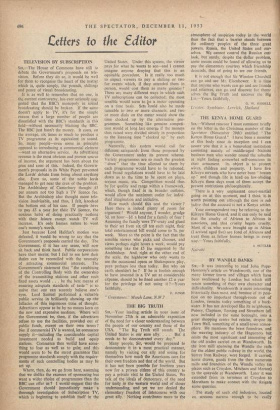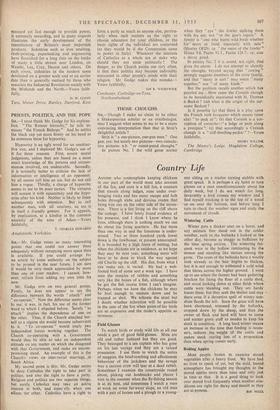BY WANDLE BANKS SIR, -- 1I was interesting to read John Pope-
Hennessy's article on Wandsworth, one of the many former towns and villages Which have been swallowed by London but which still retain something of their own character and individuality. Wandsworth is more interesting historically than most, and, because of its posi- tion on no important through-route out of London, remains today something of a' back- water. It has not developed like its neighbours, Putney, Clapham, Tooting and Streatham (all now included in the same borough), into a great shopping centre but retains, despite its Town Hall, something of a small-town atmos- phere. He mentions the brass foundries, and the weaving industry of the Huguenots btit omits the most significant and interesting of the old trades carried on at Wandsworth. In the iron mill spanning the Wandle the rails for the oldest public railway in the world, the Surrey Iron Railway, were forged. It carried, horse drawn, goods from the then numerous mills and foundries of the Wandle valley (in places such as Croydon, Mitcham and Merton) to the quayside at Wandsworth. Later it was extended from its terminus at Croydon to Merstham to make contact with the Reigate stone quarries.
The study of such old industries, located on streams narrow enough to be easily
spanned yet fast enough to provide power, is extremely rewarding, and in many respects illustrates the early development of the manufacture of Britain's most important products. Industries such as iron smelting, cloth-printing, papermaking and engineering have flourished for a long time on the banks of many a little stream near London,. on Wandle, Lea, Cray, Darent and others. On such rivers, industries in the modern sense developed on a greater scale and at an earlier date than is generally realised by those who associate the Industrial Revolution mainly with ' the Midlands and the North.—Yours faith- fully,



































 Previous page
Previous page